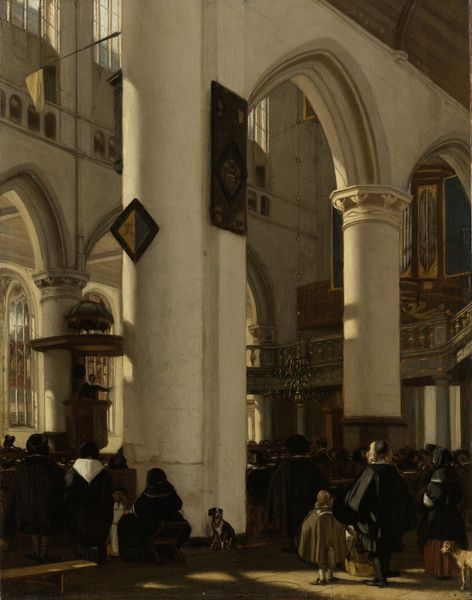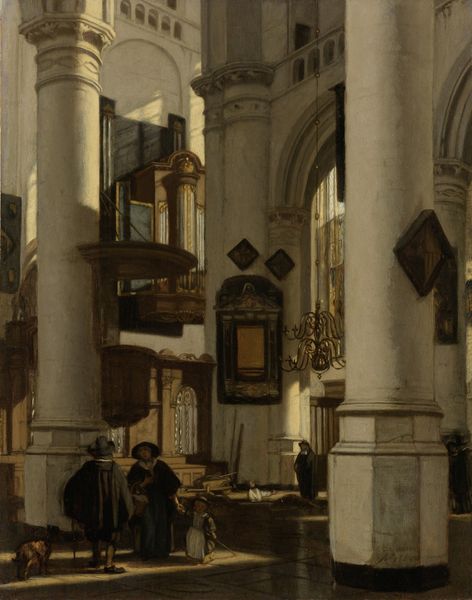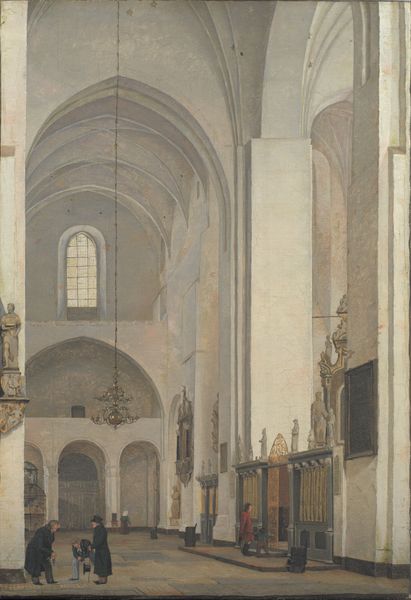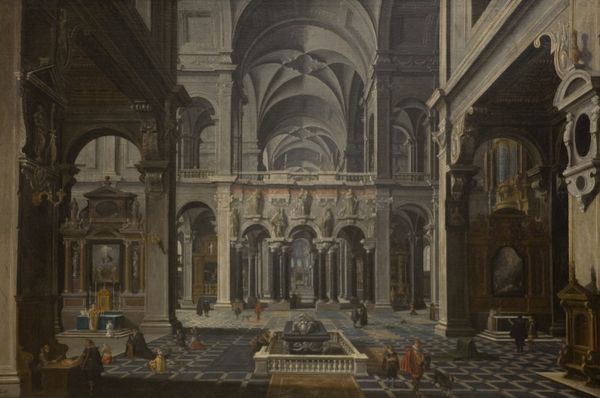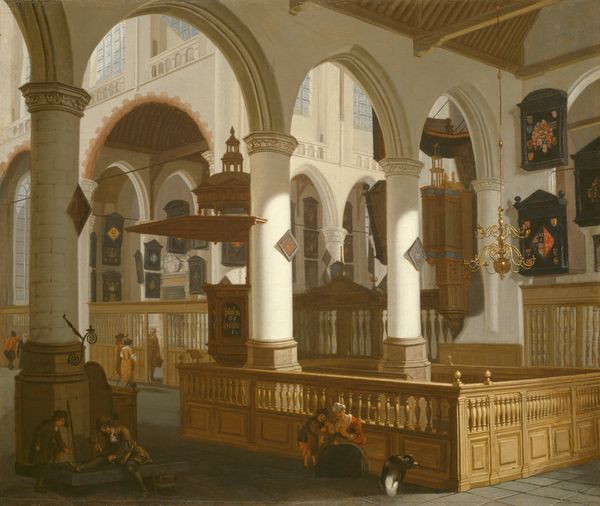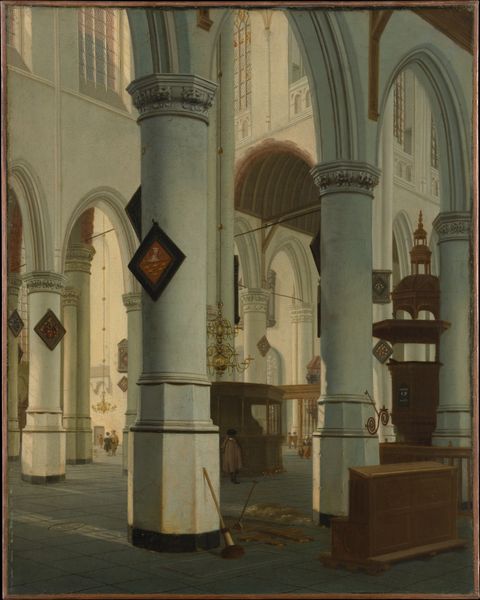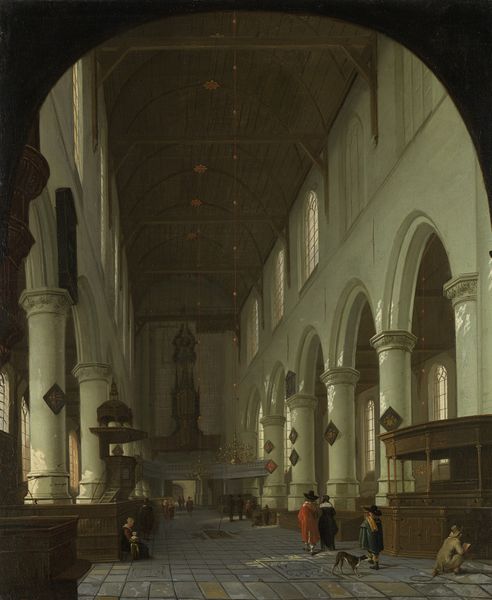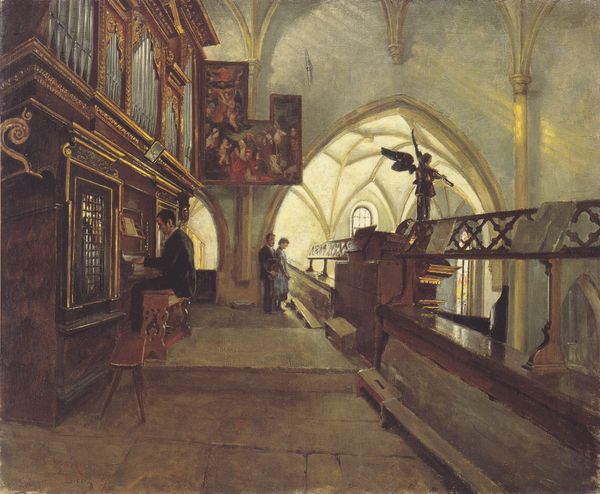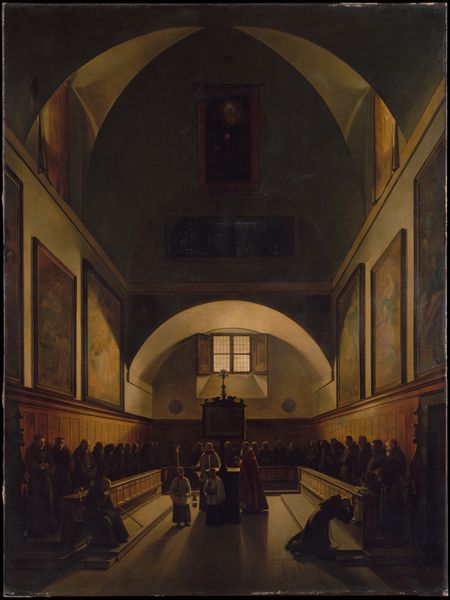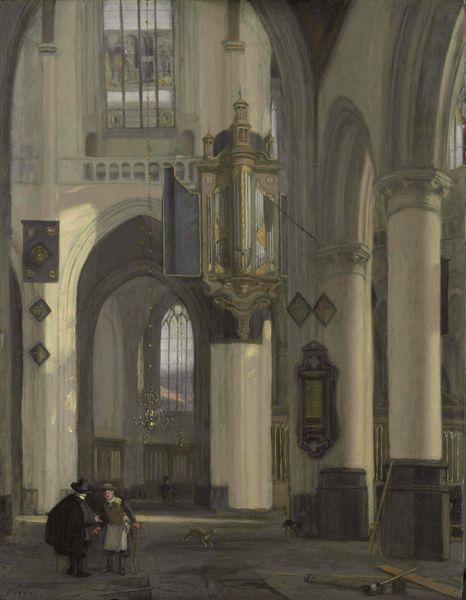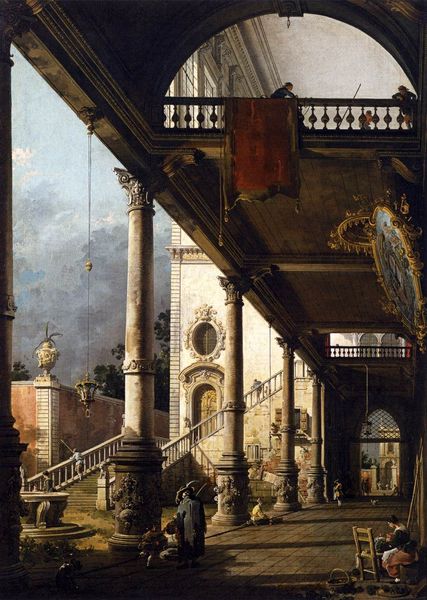
painting, oil-paint
#
portrait
#
baroque
#
dutch-golden-age
#
painting
#
oil-paint
#
perspective
#
genre-painting
Dimensions: 24 3/8 × 19 5/16 in. (62 × 49.2 cm)
Copyright: Public Domain
Editor: Here we have Emanuel de Witte’s "Interior of the Oude Kerk, Delft," painted around 1680. The light is just amazing, how it streams in! It feels both serene and a bit...theatrical, almost like a stage set. What's your interpretation? Curator: De Witte gives us a glimpse into 17th-century Dutch society through architecture and its inhabitants. It's vital to look beyond just the pictorial representation, and towards the dynamics of power present within that society. Consider who had access to these spaces, and who is being centered in the narrative. The wealthy patrons are the clear subjects here; notice the central figure dressed in an elaborate costume and look at the gazes and perspectives embedded into this scene. Do we get the sense of full and inclusive belonging for all members of society at the time? Editor: I see what you mean! I was focused on the artistry, the play of light, and the figures. It’s easy to get lost in that. Curator: De Witte manipulates perspective masterfully, but also possibly presenting an idealized version of that interior. His attention to detail gives us access to a glimpse of what it may have looked like, but we can only ask to whose eyes this painting speaks. Were all of the members of the Oude Kerk living the same experience in this physical and spiritual interior? What is absent from the canvas? How do social inequalities and marginalizations potentially echo even within the grand architecture? Editor: It shifts my understanding to think of what is absent and the implied message there. Not just what's being shown, but also what's deliberately *not* being shown. It highlights how art can reflect and even reinforce dominant perspectives. Curator: Exactly. Art is never created in a vacuum. And by interrogating its historical and social context, we get a clearer picture of not only the art, but society in which it was created and whose gaze it prioritized.
Comments
No comments
Be the first to comment and join the conversation on the ultimate creative platform.
